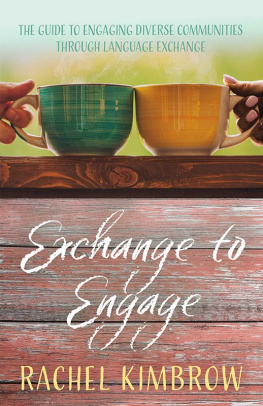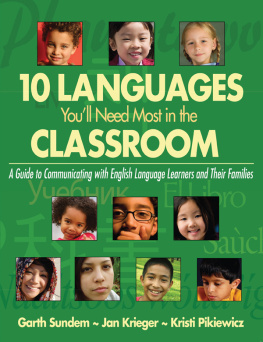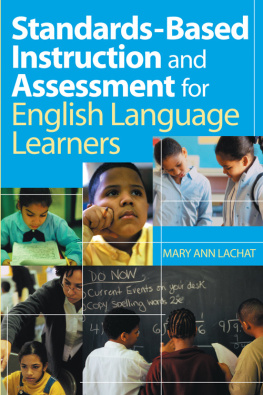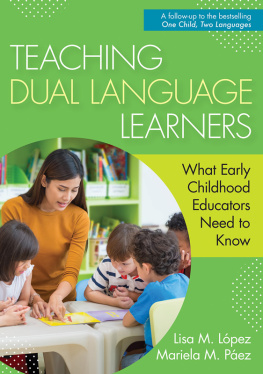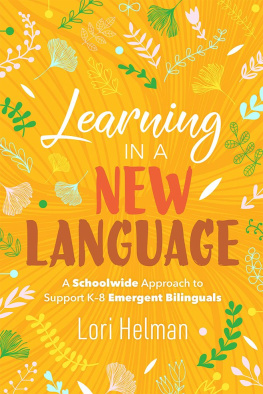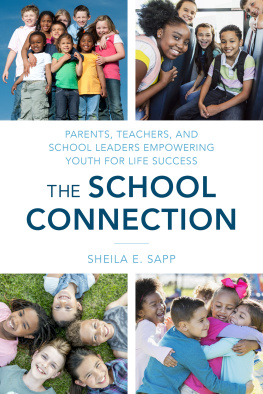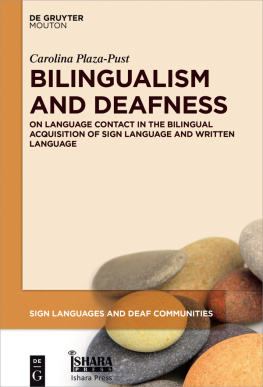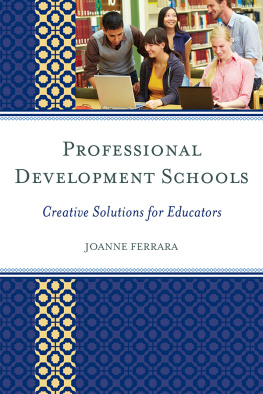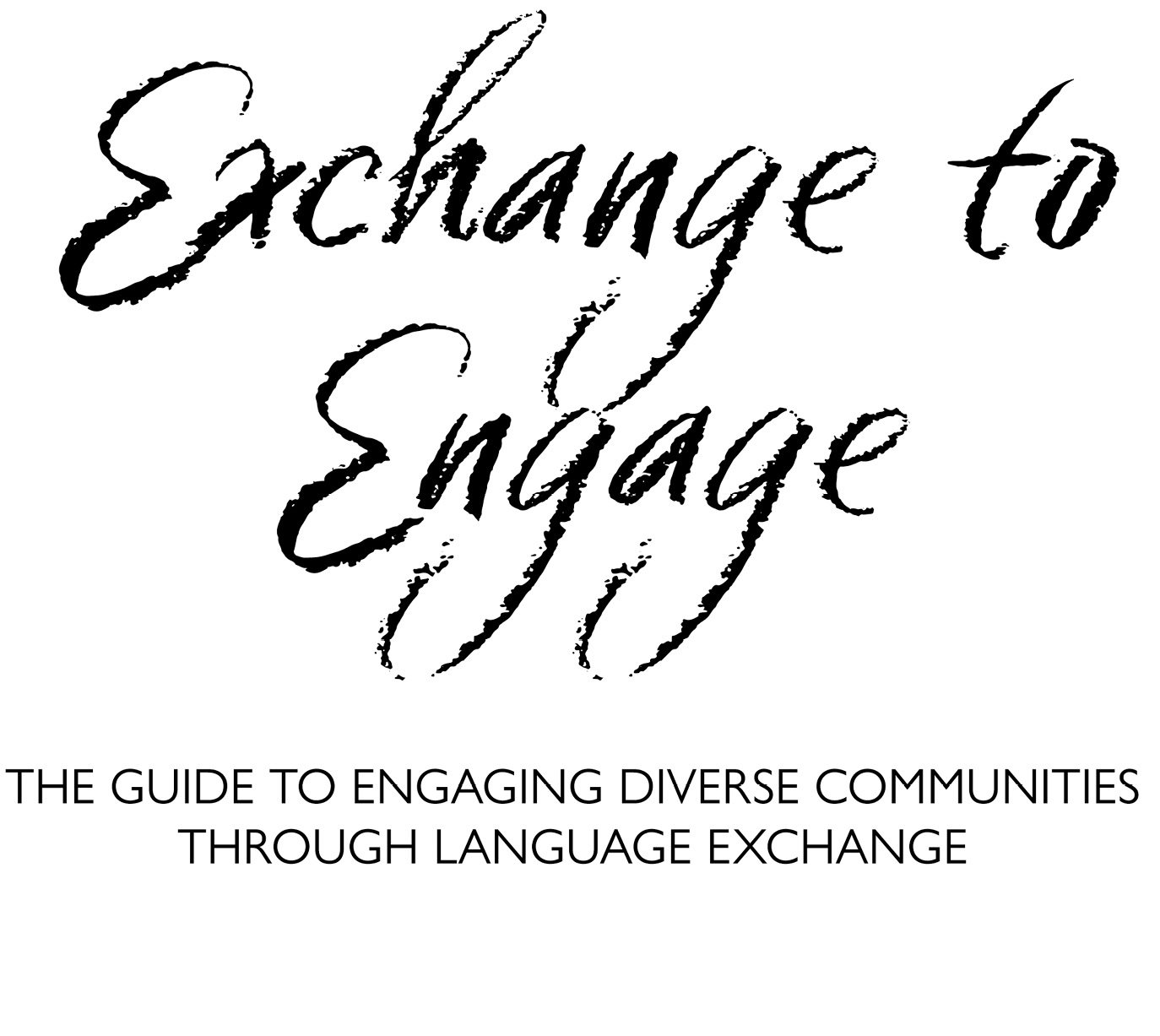Copyright 2019 by Rachel Kimbrow
All rights reserved. This book or any portion thereof may not be reproduced or used in any manner whatsoever without the express written permission of the publisher except for the use of brief quotations in a book review.
ISBN: 978-1-54398-273-2 (print)
ISBN: 978-1-54398-274-9 (eBook)
Table of Contents
Authors Note
Thank you to all the parents, teachers, and school staff members who made this project a reality. Starting with a simple idea, I had no idea how powerful it would be to step outside my comfort zone one hour a week and attempt to bring people together. I hope these narrative stories and learning more about the journey this project took me on will inspire you. With the simple how-to format in the second half of the book, you will have everything you need to start your own bilingual language exchange at your school or community organization. Names of schools and individuals have been changed.
Rachel Kimbrow
Who Is This Book For?
This guide is for anyone interested in connecting their school or community through linguistic and cultural exchange. For public educators in the United States, the Exchange to Engage program model outlined in this book can be used to meet guidelines for parent-involvement programs in schools receiving federal or state funds. This book can be used as a starting point for building a strong, inclusive community at a school or other organization. Professionals or individuals who could implement this program may include:
School Leaders
- Administrators
- Family-involvement coordinators
- Parent-teacher association (PTA) members
- Title I / Title III program directors
Educators
- English specialists
- Dual-language specialists
- Librarians
- Classroom Teachers
Community Leaders
- Church leaders
- Community support specialists
- Community organizers
- Parents
How to Use This Book
With this guide, you will learn how to connect diverse groups of people, create community at your school or organization, foster authentic communication, and improve bilingual skills, all through facilitated language exchange. A language exchange is an event where people come together to share, practice, and learn from each other in two or more languages. Intercambio is the Spanish word for exchange, and used in this book to mean language exchange. The first half of the book is narrative and personal, you will read about the first school-based intercambio groups and the impact they had on the community. In the second half, you will read and learn how to start your own program with a step-by-step guide, including language resources in Spanish and English. If your school or organization commits to investing one hour a week in connecting through language exchange, you will reap great rewards that lead to unimaginable possibilities in parent involvement, community development, and cultural shifts within your school or organization.
I hope you are inspired by these stories and the simple recipe developed by the people involved with the project, Exchange to Engage. The mission of the Exchange to Engage project is to empower students, families, and educators to build strong communities that embrace linguistic and cultural diversity. Through very simple efforts, you will have the tools to integrate and connect your diverse community. With courage and commitment, we can create strong communities that celebrate cultural and linguistic diversity. Congratulations on taking the first step to make your community a better place.
Part One: The Story of Intercambio
No meaningful family engagement can be established until relationships of trust and respect are established between home and school. A focus on relationship building is especially important in circumstances where there has been a history of mistrust between families and school or district staff.
Dual Capacity Building Framework
Chapter 1: Strength in Diversity
Schools around the world are becoming more diverse as our world becomes interconnected. Multicultural societies are the new normal. From public neighborhood schools to elite international schools, with diversity, comes challenge and opportunity. The opportunity to create engaged bilingual communities is a benefit to everyone involved. However, many schools and community organizations are experiencing a breakdown of communication, not due to intentional actions, but because of the complexity of linguistic, cultural, and social norms that we all encounter when engaged in spaces with diverse groups of people. Organizations can capitalize on the linguistic diversity of their communities and these differences to connect and empower both educators and families. Through a simple recipe of facilitated language exchange, bilingual communities can find strength in their diversity and not only toleratebut celebratelinguistic differences. With this book you will learn how to start your own language exchange program and learn from the personal histories and experiences of many participantsteachers, school staff members, parents, neighbors, and friends. Their stories will inspire you to start your own intercambio program.
The idea and motivation to start a school-based language exchange was in response to an unintentional situation in which the elementary school where I was working at the time had been excluding many families for years. As has been the case in many schools, this elementary school was not unique in that there were significant communication breakdowns between parents and teachers. Few parents were involved with the PTA (Parent Teacher Association.) Classroom volunteers were scarce. Parents were often seen as the problem to students lack of academic or social skills. The widest communication gap was between the large Spanish-speaking parent community and the relatively monolingual English teaching staff. As an English Language Development specialist at Lakeview Elementary School, I noticed the rapid changes in student-body demographics and how these changes surprised many teachers, staff members, and other locals who had been living in the area for generations. Parent involvement and engagement were limited, as well as personal relationships between members of the Latino and Anglo communities.
Like most high-poverty schools in the United States, our school was required to put together some sort of parent-engagement program to comply with receiving federal Title I services, additional funds to support literacy initiatives awarded to public schools with high numbers of families living in poverty. The parent-involvement aspect of the Title I program is designed with the intent to bring parents in to the school to educate and promote the schools literacy programs. As one of several English specialists at the building, I was also required to host similar parent events to comply with Title III services, additional federal funds for programs to support students learning English as an additional language. Like many schools, my elementary school invited parents to the school for certain themed parent nights. These well-intentioned evening events were meant to engage families and teach them about the language and literacy programs offered at the school. Common events included costumed reading nights, themed family nights, and open houses. These events were generally a lot of fun, as well as a significant amount of work to put on. Hours were spent planning, preparing, hosting, and then cleaning up after the occasion. Despite the effort and positive intent, these events never got to the heart of meaningful communication between parents and school staff. While there were multiple opportunities for family engagement, the results were often not equal to the time and energy spent planning and executing the events.

